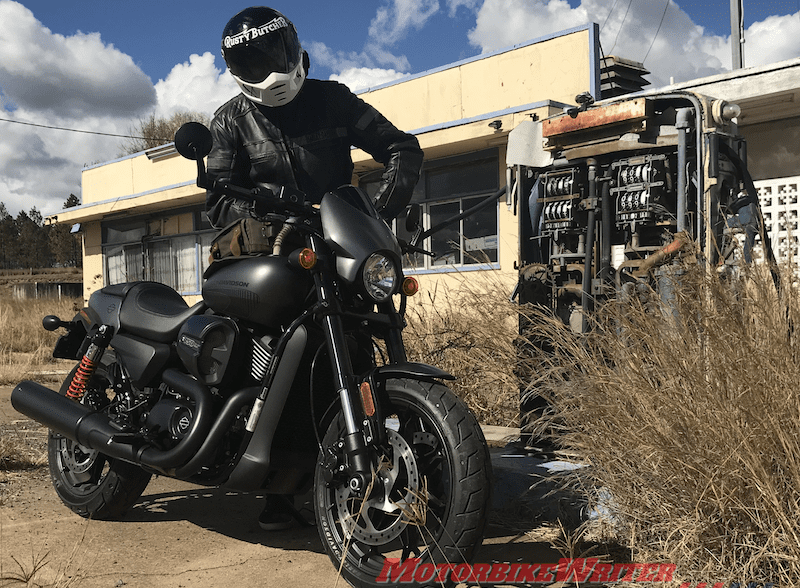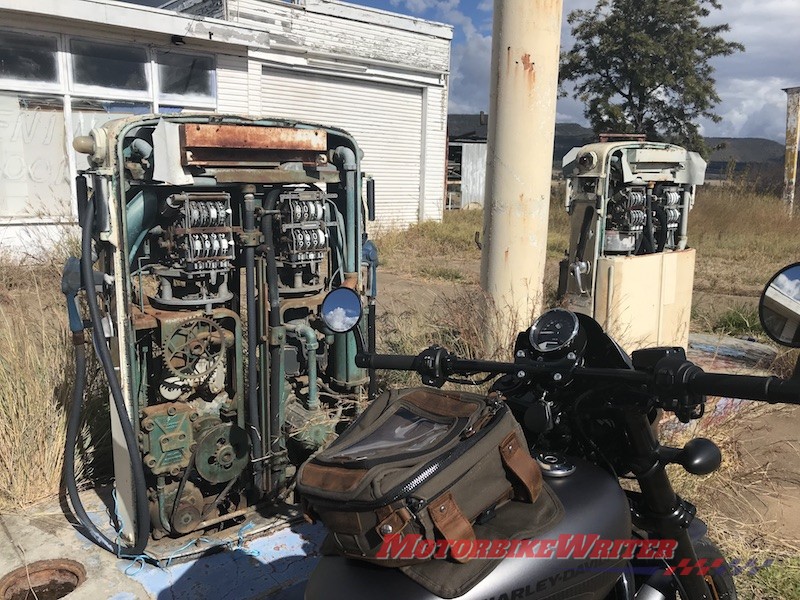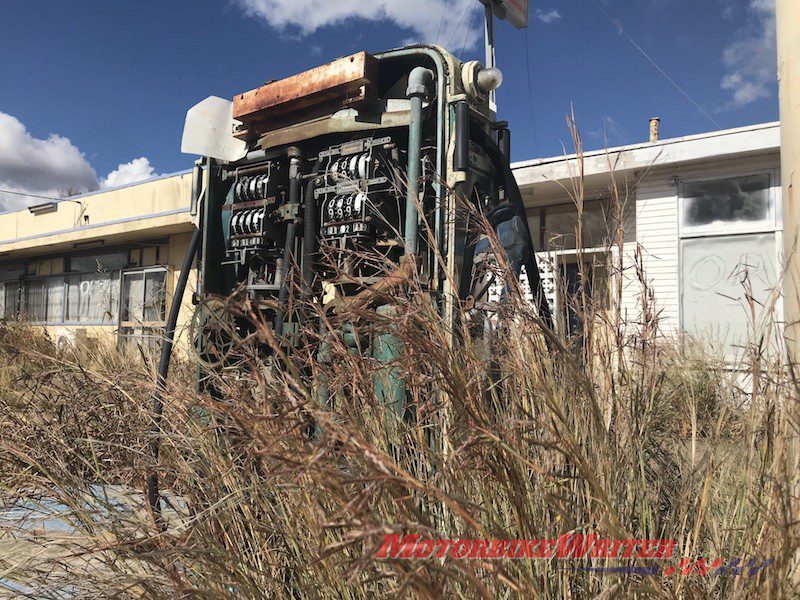President Donald Trump says his is “getting very close” to approving a waiver to allow 15% ethanol fuel blends (E15) to be sold year-round.
The American Motorcyclist Association is furious. It says it is illegal to use fuel containing more than 10% ethanol in motorcycles and ATVs. They say ethanol can damage fuel systems and engine components and may void a manufacturer’s warranty.
In Australia, Queensland and NSW force service stations to supply a certain percentage of E10. However, if Trump is successful, it could embolden politicians here and around the world to increase the ethanol content in fuels.
The Australian Federal Chamber of Automotive Industries lists the following motorcycles, scooters and ATVs and their suitability for E10.
| E5 Suitable | E10 Suitable | ||||
| BRAND | MODEL | Yes | No | Yes | No |
| Aprilia | All motorcycles and scooters | √ | √ | ||
| BMW | All motorcycles post 1986 | √ | √ | ||
| Buell | All motorcycles | √ | √ | ||
| Can-Am | All ATVs & SSVs | √ | √ | ||
| Ducati | All motorcycles | x | x | ||
| Harley Davidson | All motorcycles post 1986 | √ | √ | ||
| Honda | All motorcycles and All Terrain Vehicles | x | x | ||
| Hyosung | All motorcycles | x | x | ||
| Husqvarna | All motorcycles | √ | √ | ||
| Indian | All motorcycles | √ | √ | ||
| Kawasaki | All motorcycles and All Terrain Vehicles with the exception of the list below | x | x | ||
| Kawasaki | KLX110A/C/D (KLX110/L) 2006-2012 models, KL250J (Stockman) 2006-2012 models, KLX250T (KLX250S) 2009-2012 models, KLX250W (KLX250SF) 2010-2012 models, KL650E (KLR650) 2008-2012 models, KLE650A (Versys) 2008-2009 models, KLE650D (Versys ABS*) 2010-2012 models, ER650A (ER-6n) 2006-2008 models, ER650C (ER-6n) 2009 model, ER650D (ER-6n ABS*) 2009-2011 models, EX650A (ER-6f) 2006-2008 models, EX650C (Ninja 650R) 2009 model, EX650D (Ninja 650R ABS*) 2010-2011 models, ZR750L (Z750) 2007-2012 models, EJ800A (W800) 2011 2012 models, VN900B ( Vulcan 900 Classic) 2006-2011 models, VN900C (Vulcan 900 Custom) 2006-2011 models* E10 fuel is approved for use in these LAMS variants models | √ | √ | ||
| KTM | All motorcycles | √ | √ | ||
| Moto Guzzi | All fuel-injected motorcycles
|
√ | √ | ||
| Piaggio | All fuel-injectedmotorcycles/scooters | √ | √ | ||
| Polaris | All motorcycles | √ | √ | ||
| Suzuki | All motorcycles and All Terrain Vehicles except the two stroke range | √ | √ | ||
| Triumph | All motorcycles | √ | √ | ||
| Vespa | All fuel-injectedmotorcycles/scooters | √ | √ | ||
| Victory | All motorcycles | √ | √ | ||
| Yamaha | All motorcycle and All Terrain Vehicles | ||||
Ethanol doesn’t work with carburettors or mechanical fuel injection. It is also a solvent which attacks metallic and rubber-based fuel lines, and has an affinity to water that can cause steel fuel tanks to rust.
In the USA, E15 cannot be sold during summer without an Environmental Protection Agency waiver because of the fuel’s high volatility.
American farmers want Trump to force the EPA to grant the waiver year-round.
This would lead to an increase in the number of stations selling E15, placing riders in greater jeopardy of misfueling, says AMA spokesman Wayne Allard.
“The AMA also fears that higher-ethanol blends, such as E15, will begin to push ethanol-free and E10 fuel out of the marketplace, much the way E10 has marginalised E0, the fuel required for older and vintage machines,” he says.
Wayne points out that most consumers shop for fuel by price, rather than ethanol content, and ethanol costs less.
Fooled by E10 and E15 fuel
The concern is that many riders are inadvertently using ethanol-blended fuels and are unaware their motorcycle could be damaged.
Some Australian riders may be fooled by the higher octane rating of E10 fuels, usually 95 compared with ULP at 89 or 91 and PULP at 95 or 98.
They have the misconception that the 95 octane rating is suitable for modern engines yet cheaper than PULP.
RACQ technical executive manager Steve Spalding warns that higher-octane E10 may not meet the fuel requirements for bikes designated to run on PULP.
While the RON may be high enough, there is another property in fuel, called Motor Octane Number (MON), which is rarely specified on the bowser.
MON is usually about 10 numbers lower than RON, so a MON of 85 would be ok for a bike rated at 95 RON.
However, ethanol fuels have much lower MON numbers than their RON which could be too low for your bike.
Cheaper fuel
Riders are also confused and attracted by the fact that E10 is usually a few cents cheaper than ULP and much cheaper than 95 or 98 RON.
However, ethanol has about 30% less energy than regular unleaded fuel. So a litre of E10 has about 3% less energy. That means your engine performance, fuel economy and range will be 3% worse.
The price of E10 needs to be at least 3% less than ULP for riders to break even on the fill.
Fuelling advice
Either ask the service/gas station for the MON rating or fill up non-ethanol premium unleaded fuel of 95 RON or higher.
It is always best to have a higher octane rating than a lower one even though modern engine management systems have knock sensors that can handle lower octane.
If there is no choice but to fill up with ethanol fuel, make sure your next fill is with a high-octane fuel.
There are plenty of signs and advertising around promoting ethanol, but nothing warning motorcyclists about the potential engine damage!




